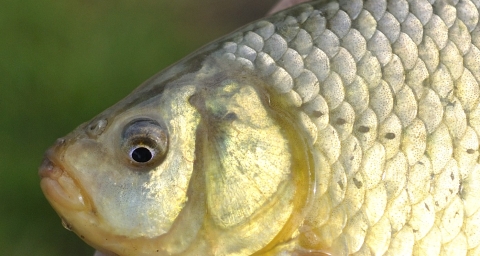“It’s like trying to find a needle in 100,000 haystacks.”
That’s the metaphor Dr. Zy Biesinger uses to describe the challenge of catching a newly introduced invasive fish in the Great Lakes. You might have a better chance buying a winning lottery ticket.
“And if you don't find them before they start spreading, then it's too late,” said Biesinger, fish biologist at the U.S. Fish and Wildlife Service’s Lower Great Lakes Fish and Wildlife Conservation Office in Basom, New York. At that point, eliminating the species becomes challenging and costly.
In the Great Lakes, where controlling invasive species invasive species
An invasive species is any plant or animal that has spread or been introduced into a new area where they are, or could, cause harm to the environment, economy, or human, animal, or plant health. Their unwelcome presence can destroy ecosystems and cost millions of dollars.
Learn more about invasive species , like carp and sea lamprey, already costs millions of dollars each year, preventing the establishment and spread of new ones is critical.
Fortunately, scientists have a trick up their sleeves — one that allows them to detect a fish without even seeing it!
Testing the water, scientists can identify fish species present in an area by looking at the DNA they leave behind — a vital clue to combat invasive species early.
The magic of metabarcoding
Environmental DNA, or eDNA, can come from a fish’s shed scales, feces or other secretions. Like an amateur criminal, they leave DNA everywhere they go, and it can persist in the water for a couple days.
Scientists at our Northeast Fishery Center and Whitney Genetics Lab process eDNA samples in their labs and, through metabarcoding, identify each species that was present when the water sample was taken. Similar to a barcode on your cereal box, each species has a unique DNA sequence.
In the biology field, metabarcoding is a well known and widely used technology, often used to identify species. But using it on this large scale — processing thousands of samples annually — is novel and exciting.
“It allows us to be much broader in our search for aquatic invasive species,” said Dr. Aaron Maloy, geneticist at the Northeast Fishery Center.
A strong foundation
Successful metabarcoding relies on a complete reference database. The process matches DNA found in a water sample with the DNA of known species. Without reference data, it isn’t possible to identify individual species and determine if there’s something new in the water. It’s kind of like playing “Go Fish” with a single suit of cards.
“Building out that reference data set and completing it for all of the fish species of the Great Lakes Basin has been really critical to getting the project up and running,” Maloy said.
Collecting reference data has been a collaborative project between our Fish and Wildlife Conservation Offices and partners, including state agencies, Tribes and universities.
“Partners are on the water handling fish for other purposes and for years have been opportunistically taking fin clips to support the reference database development,” he said. In the lab, the geneticists obtain DNA sequences from the known species and add them to the database.
Maloy believes the reference database for native species of the Great Lakes is now nearly 98% complete. With this, combined with DNA sequences from fish around the world — possible future invasive species in the Great Lakes — geneticists can produce lists of species from lake samples they receive, revealing any fish that doesn’t belong.
Game changer
As with any tool, there are limitations. eDNA can travel to a body of water by bird feces, boats and other avenues. Finding DNA from a species doesn’t necessarily mean a live, invasive fish was present.
But the rewards outweigh the risks. Metabarcoding is more efficient than other detection methods — like setting nets to catch invasive fish — and can expand the reach of the early-detection program.
“Metabarcoding takes fewer staff hours,” Biesinger said. “You can go to many more places and get much more information with relatively little effort.”
Biesinger’s team monitors and collects eDNA from a handful of sites in Lake Erie and Lake Ontario, while counterparts at the Ashland, Alpena and Green Bay fish and wildlife conservation offices, as well as conservation partners, cover other sections of the Great Lakes. For now, they’re sampling areas that have a high risk of invasive species being introduced — locations near large human populations.
While crews can collect thousands of samples from the lakes, the labs are limited by staff capacity and space for sample processing.
“Being able to cover more areas hinges on lab capacity,” Biesinger said.
Fortunately, funding from the Great Lakes Restoration Initiative is supporting personnel increases and laboratory expansion at the Northeast Fishery Center and Whitney Genetics Laboratory. The labs will also add to their invasive species genetic database with support through the Bipartisan Infrastructure Law Bipartisan Infrastructure Law
The Bipartisan Infrastructure Law (BIL) is a once-in-a-generation investment in the nation’s infrastructure and economic competitiveness. We were directly appropriated $455 million over five years in BIL funds for programs related to the President’s America the Beautiful initiative.
Learn more about Bipartisan Infrastructure Law .
These investments are pivotal to protecting the health of Great Lakes ecosystems.
Though early detection of invasive species is challenging, with metabarcoding, it’s easier. We can know if there’s a needle in the haystacks and generally which haystacks to look through. Having this information to act early can make all the difference.






